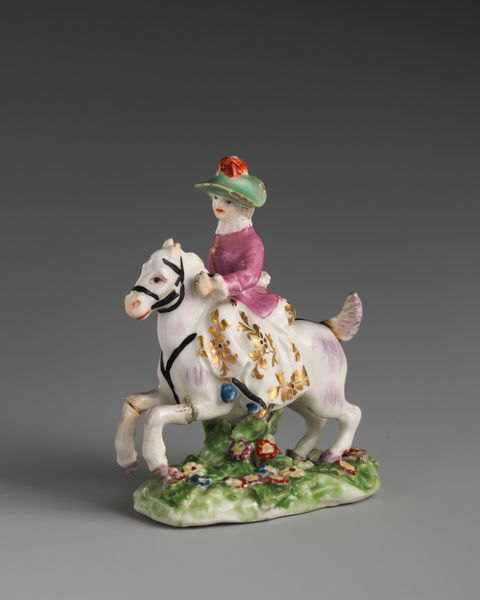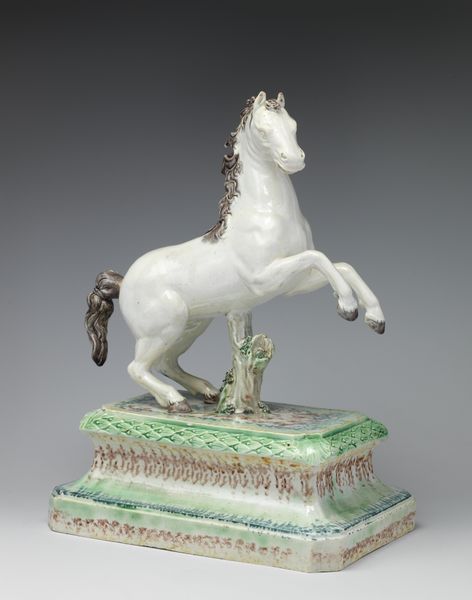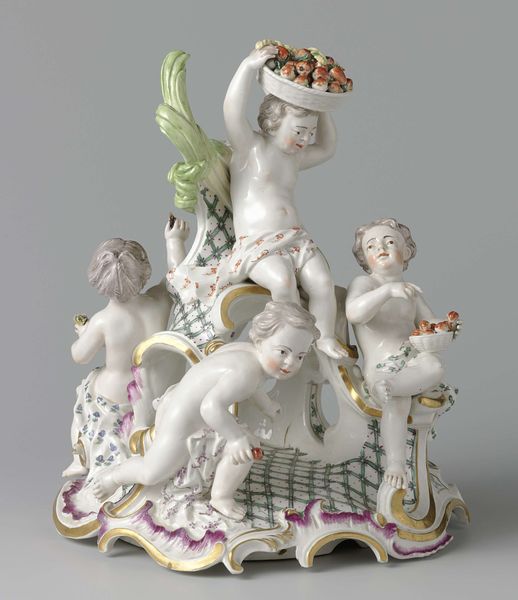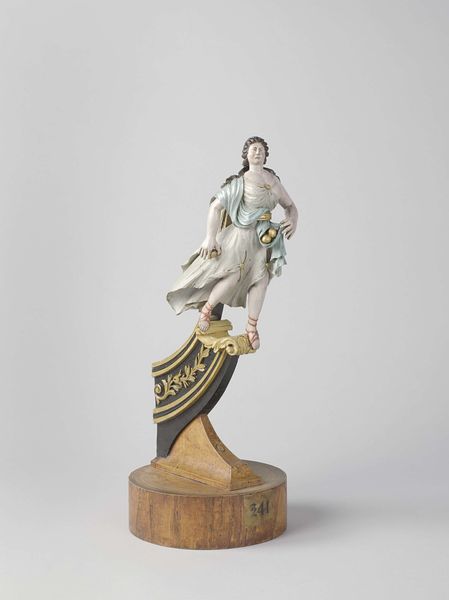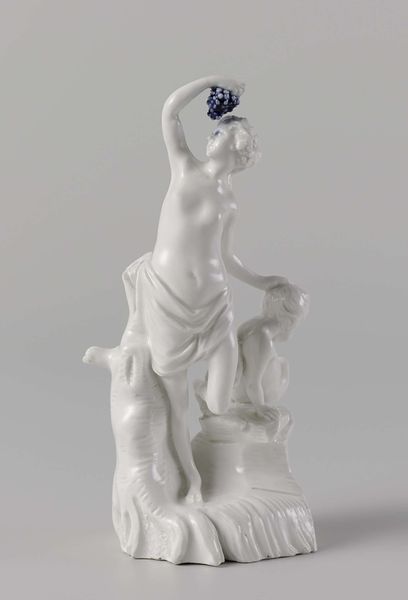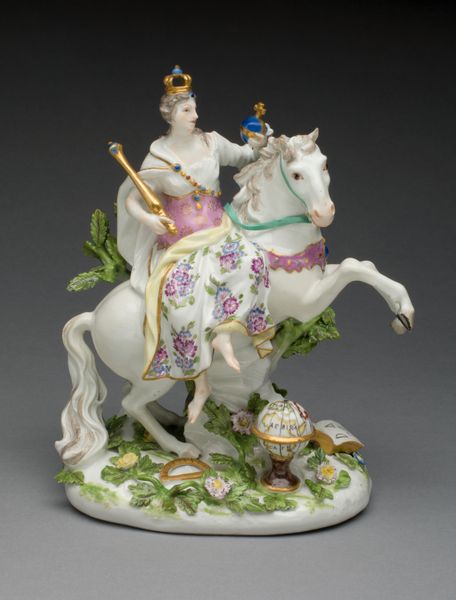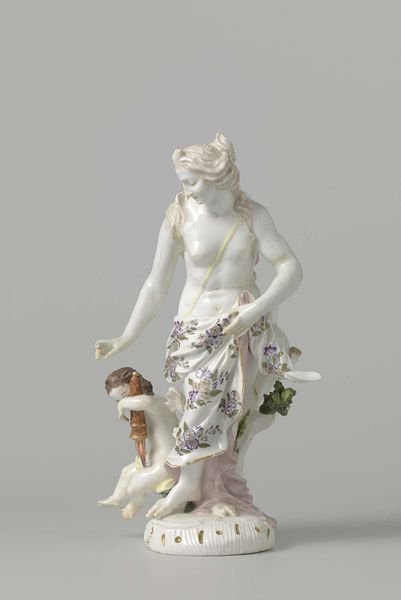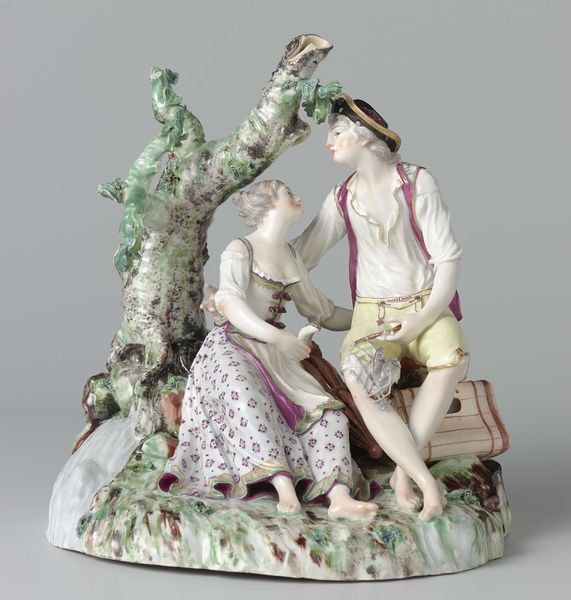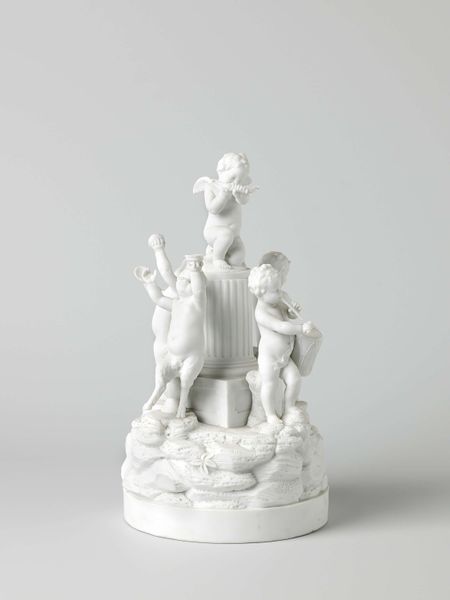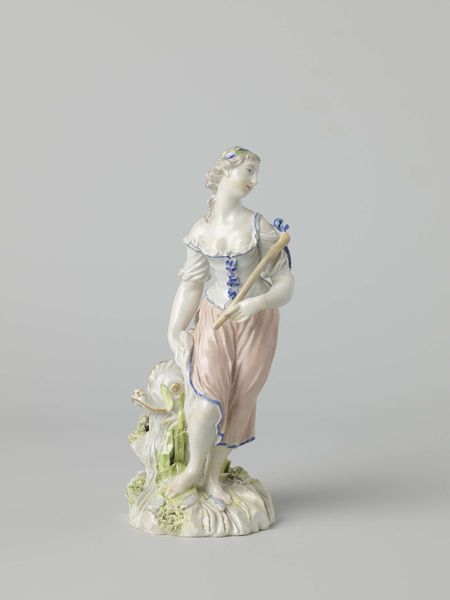
porcelain, sculpture
#
sculpture
#
porcelain
#
figuration
#
sculpture
#
erotic-art
Dimensions: height 40 cm, width 40.2 cm, depth 13.5 cm, weight 4000 gr
Copyright: Rijks Museum: Open Domain
Curator: Look at the remarkable detail in this porcelain sculpture from 1909. It’s attributed to the Königliche Porzellan Manufaktur, and titled "Figure of a woman riding a bull." Editor: The cool, sleek surfaces against the warmth of the gold detail of the robe—there's a stillness about the piece. A moment of suspended grace and an inherent tension, especially given that the woman looks quite exposed in contrast with the bulk of the bull. Curator: Indeed. Consider the history here. Depictions of women riding bulls are rich with cultural baggage, invoking the myth of Europa, who was abducted by Zeus in the form of a bull. That act initiated a whole series of lineages. The work sits in that space between sensuality and power dynamics, I think. Who has the control, in this scene? Editor: That's fascinating. From a formal standpoint, the artist captures the textural contrast beautifully: the animal’s robust form rendered with a certain smoothness, a stillness and an intimation of latent force—particularly in those solid legs and chest—offset against the soft modeling of the figure. What does it mean formally to drape a figure so vulnerable in just a bit of fabric on an animal that historically figures a male power? Curator: I'd suggest that tension lies in its deliberate invocation of erotic art—yet tempered with the high craft of the porcelain manufacture. The glossy surface adds another layer of removal; it’s idealized. One must ask about whose gaze this sculpture is intended to satisfy? Who benefits from this image of feminine vulnerability presented on this raw power of an animal, which you noticed right away? Editor: You are absolutely right: "whose gaze." And I must ask then: does the exquisite artistry of porcelain allow a softening or interrogation of what, to modern eyes, might seem like the straightforward symbol of oppression or domination? How are we, then, to read the smoothness of the skin, which renders flesh as though it were yet another type of textile, not really related to the feeling of bodies as we now conceive of them? Curator: And note how those material signifiers – gloss, precision of modeling, the choice of classical theme– soften some potentially unsettling subject matter to make it suitable, say, for a bourgeois display. Editor: It strikes me now as less about raw sexuality and more about artifice—both on the part of the artist and on the part of the audience. It feels like a construction, maybe not really an effort to capture real flesh. Curator: Precisely. The figure's apparent nonchalance hints at an almost cynical exploitation of subject. Thinking of the historical era from which this piece comes and of modern expectations, it’s good to see that in some ways, our conversation mirrors so much complexity of human behavior. Editor: Thank you for sharing your knowledge and views on the historical background to allow for these perspectives to shine to surface, it helps to see even just the texture anew.
Comments
No comments
Be the first to comment and join the conversation on the ultimate creative platform.
